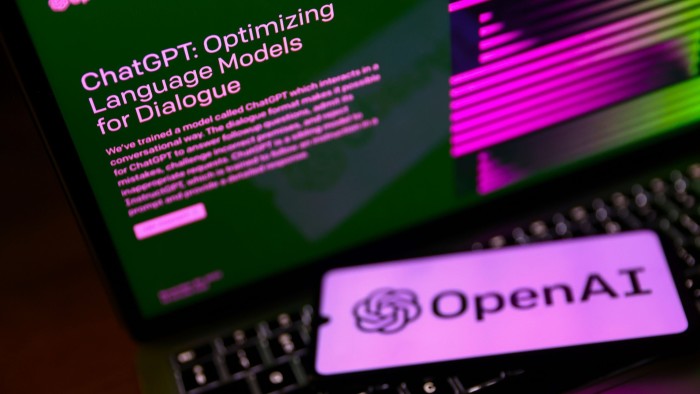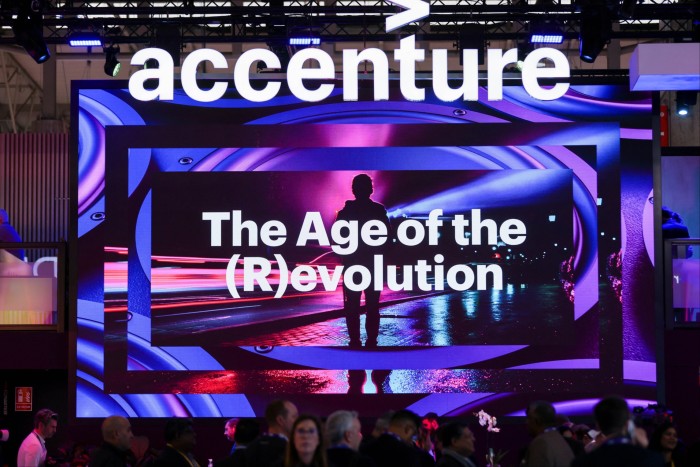Will AI seal the deal for commercial contracts?

Simply sign up to the Artificial intelligence myFT Digest -- delivered directly to your inbox.
Businesses have long been seeking digital solutions to managing their legal contracts — which can cover everything from supply deals to non-disclosure agreements and government outsourcing. And accurate, efficient systems are important because, as Christina Demetriades, general counsel for Europe at consultancy Accenture, puts it: “The lifeblood of all corporates is the contract.”
Over the past decade, many of the more laborious tasks involved — such as reviewing large contract documents to find clauses that contravene legal policy or to check compliance with financial and data regulations — have been automated through the use of artificial intelligence. It is included in contract lifecycle management software, which helps to draft, store, search, and manage a company’s agreements. Among the advantages is simple speed. “Our platform produces in minutes what takes a lawyer typically four hours,” says Tim Pullan, chief executive of ThoughtRiver, which writes contract software.
But, now, businesses and their software providers are turning to new generative AI tools to automate the review of contracts. Since generative AI chatbots — such as OpenAI’s ChatGPT — launched late last year, corporate interest has grown in wider applications of this new tech, which uses natural language processing of vast amounts of data to learn how to produce new text and images.
The noise around generative AI has also led to fears about it taking work away from lawyers. What if the new tech is so efficient that companies decide they need fewer in-house counsel? According to research published this year by Princeton University, the University of Pennsylvania and New York University, legal services is now the industry most at risk from this latest wave of AI.
However, Ryan O’Leary, a legal tech expert at research company IDC, believes such fears are overplayed: “Really, what it’s going to do is be a digital co-worker,” he argues.
AI may prove a faster worker, though. In April, San Francisco-based legal tech provider Ironclad released a contract negotiation tool, called AI Assist, that incorporates OpenAI’s GPT-4 technology. It can read an NDA, compare it to the customer’s legal guidelines for contracts, and suggest edits. “The legal review of contracts is happening 20 times more efficiently using [generative] AI and automation,” says chief executive Jason Boehmig, formerly a corporate lawyer at a Silicon Valley law firm.
Crucially, however, users will have the ability to train Ironclad software using their own agreements and clauses, teaching it how to highlight irregularities.

At the consultancy Accenture — where legal professionals use AI extensively for legal work, including contract review, signing and tracking — Demetriades says the incorporation of generative AI is at an early stage. But she is optimistic about its potential. The legal department calculates that using generative AI will bring productivity gains of 15 per cent to 20 per cent within around three years, she says. And it “will augment legal professionals’ capabilities”, as well.
Shahid Rayyaz, a lawyer at UK engineering consultancy Hoare Lea, a ThoughtRiver customer, is already using generative AI for contract work. This should reduce the contract review team’s costs by about one-third a year, over five years, he says.
Savings will come from increased productivity and lower spending on external law firms — without reducing the team’s headcount. “Time and cost have been the two biggest savings,” Rayyaz notes.
Culture clashes and ‘hallucinations’
Even so, it is already clear that the novelty, power and complexity of generative AI create challenges, too.
Only some 54 per cent of in-house lawyers in the US, the UK, and Canada, who were surveyed by Thomson Reuters Institute researchers in April, said that ChatGPT/ generative AI should be used for legal work. Their concerns included accuracy, privacy, confidentiality, and security.
Demetriades shares some of their concerns — pointing, for instance, to a potential “culture clash” if the lawyers’ need “to get things right” conflicts with generative AI’s requirement for experimentation.
And the emergence of flaws in generative AI, such as “hallucinations” — the fabrication of ‘facts’ — means it requires careful oversight, or so-called guardrails, when used for contracts.
Liz Grennan, associate partner at consultancy McKinsey & Co, and an expert in law and tech, warns that generative AI is unsuited to precision drafting, because just one wrong word or phrase slipped in unnoticed could have expensive repercussions. But she believes “it is great for helping lawyers who are busy [to] really understand the context of the work they are doing”.
Another consideration for legal departments is that automation generally leads to contracts expanding in size. “[When] lawyers can produce content more easily, it has tended to produce longer contracts,” points out ThoughtRiver’s Pullan.
On top of that, it can take months to fine-tune the large language models — the training and the data — used in generative AI systems, to weed out false data, and to school them in the quirks of a company’s contract principles and non-negotiables. However, such bespoke versions would potentially undermine the advantages of scale: AI suppliers — ThoughtRiver, for example — say they may charge extra for such customisation.
That said, emerging standards for legal data, such as Sali (Standards Advancement for the Legal Industry) and OneNDA, an open source standard for non-disclosure agreements, may ease integration headaches.
It is likely, therefore, that generative AI will both build on advances in the automation of contract drafting and review, and require skilful monitoring at the same time. As IDC’s O’Leary puts it: “Negotiation and the interpretation of clauses and escalating to litigation” will still need to be done by lawyers.

Comments